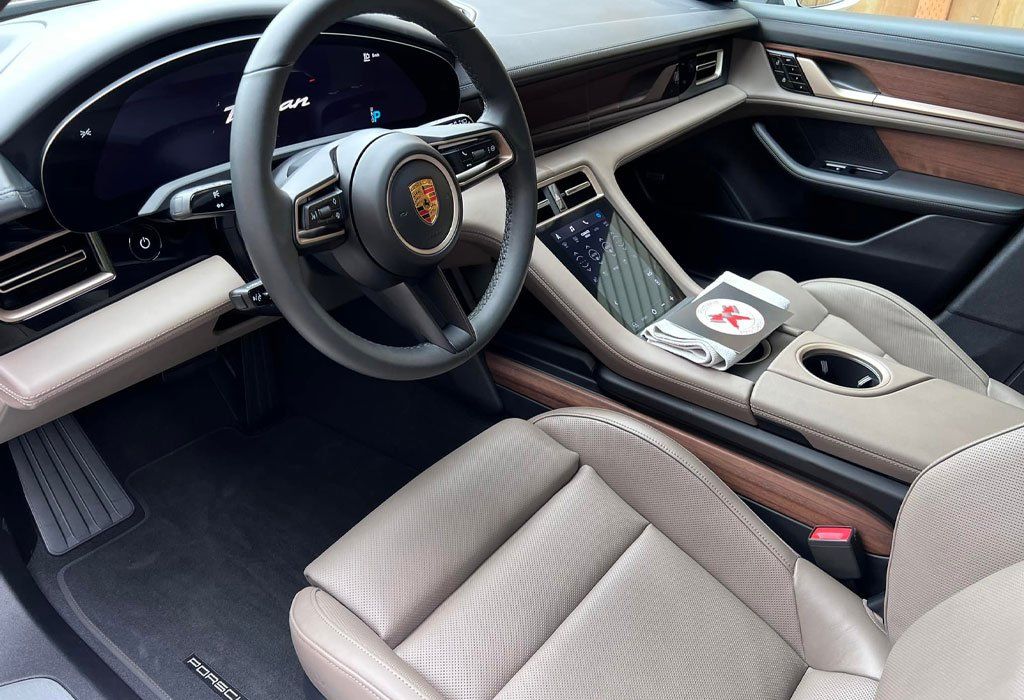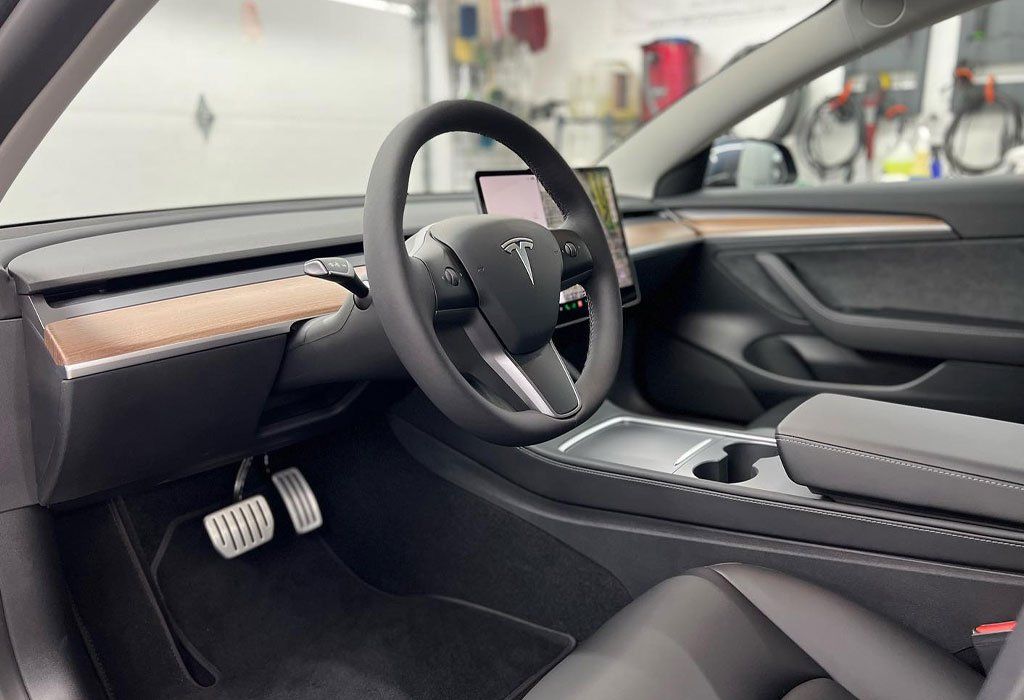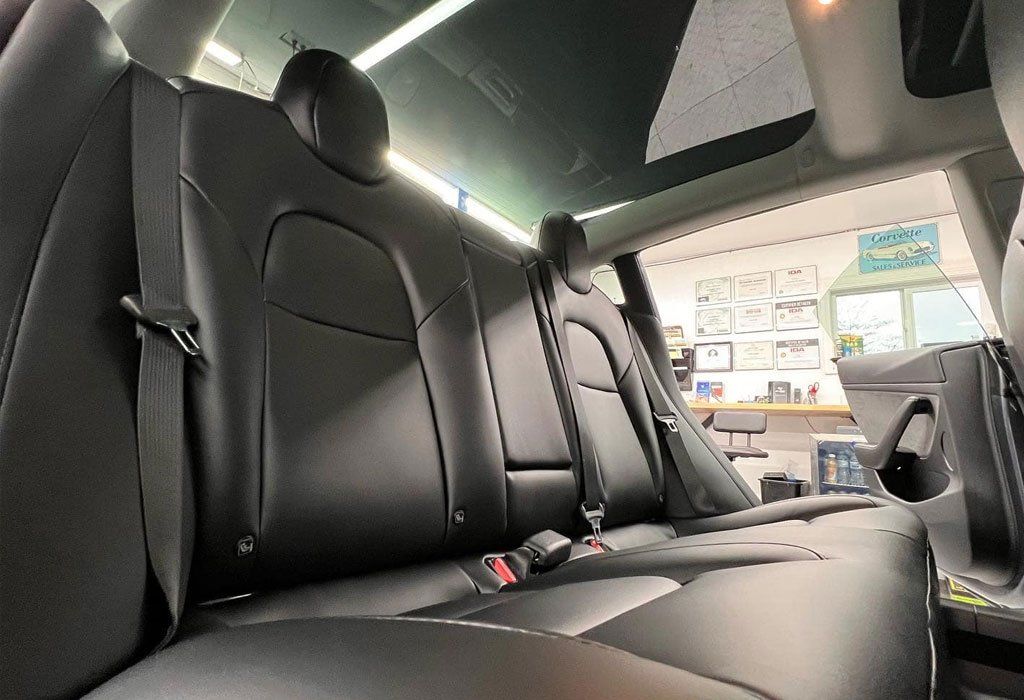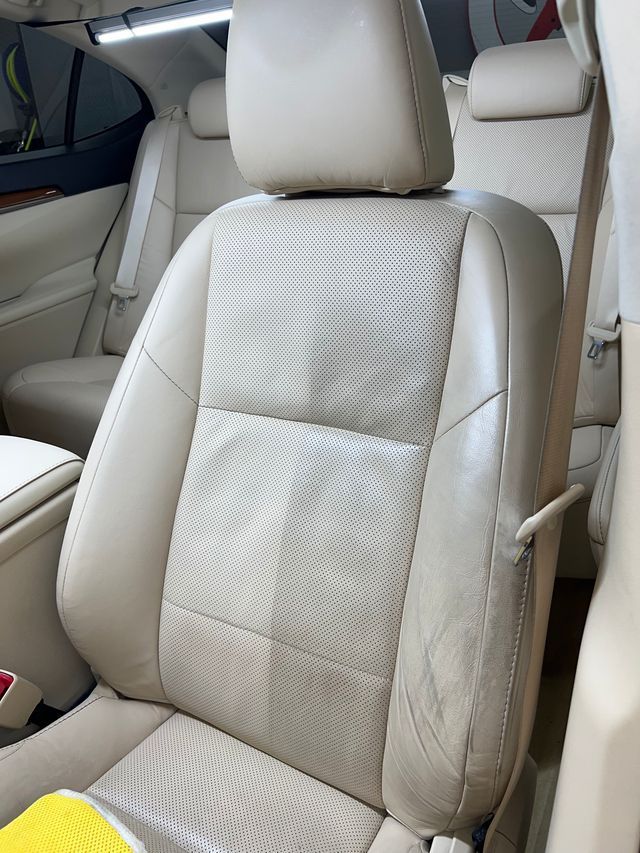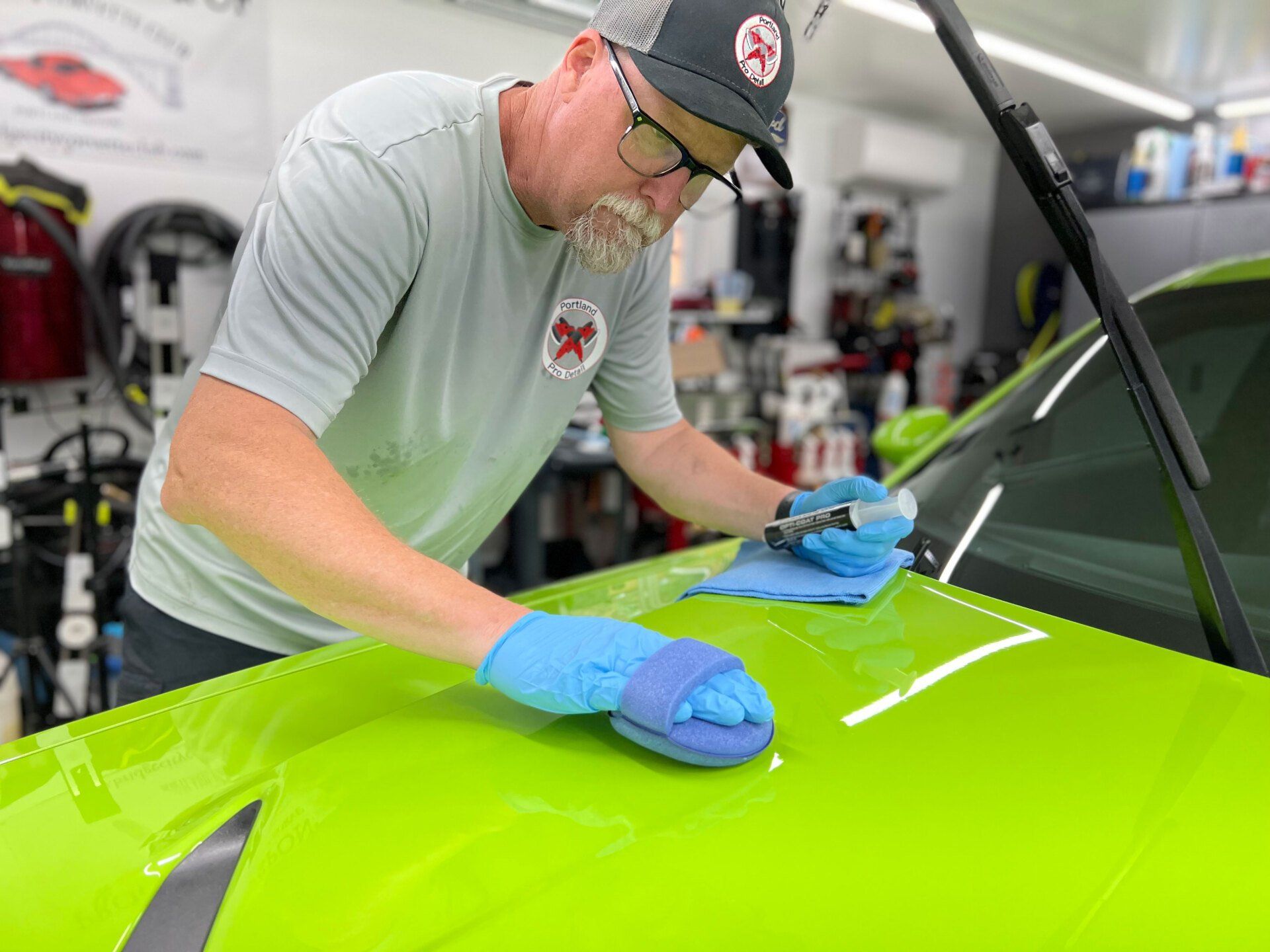Interior Vehicle Coating: How to Maintain Leather Feel and Color Effectively
CALL (503) 444-7415
When you think about the comfort of your car's interior, leather often comes to mind as the go-to material for luxury and style. However, keeping that leather looking and feeling great takes more than just a simple wipe-down every now and then. Proper maintenance is key to ensuring your vehicle's leather remains soft, vibrant, and durable against daily wear. Many people underestimate the effort it takes to protect their investment, but with the right tips and techniques, you can extend the life of your leather interior significantly. Just like caring for your skin, nurturing your car's leather requires consistency and the right products.
To maintain the leather feel and color of your vehicle's interior, it is essential to regularly clean the surfaces with a specialized leather cleaner and apply a high-quality leather conditioner. This not only preserves the texture and luster but also protects against fading and drying caused by sun exposure and everyday wear.
Choosing the Right Coating for Vehicle Interiors
When it comes to maintaining your vehicle's leather, choosing the appropriate interior ceramic coating can significantly impact both its aesthetic and longevity. The type of leather you have plays a pivotal role in this decision. Not all leathers react the same way to different treatments or coatings; some are more porous and absorb products differently than others. Thus, assessing the characteristics of your leather is essential before making a choice about any product.
Types of Leather Coatings
As we navigate through the options available, it helps to consider the primary types of coatings: water-based and solvent-based. Water-based coatings tend to be gentle on leather, making them ideal for softer or older leathers that may have experienced wear and tear over time. These coatings are less likely to dry out and cause damage to delicate materials. They provide adequate protection while preserving the natural look and feel that many car enthusiasts cherish. On the other hand, solvent-based coatings usually offer more durability and protection. These formulations form a robust barrier that stands up well against daily use, making them suitable for vehicles often exposed to various elements like sunlight and moisture. However, caution should be taken with sensitive leathers, as these can sometimes strip away natural oils and lead to premature aging.
Think of it this way: choosing between water-based and solvent-based coatings is similar to deciding between a light moisturizer versus a heavy-duty cream—both serve a purpose, but one may suit your specific needs better than the other. Taking into account your specific type of leather and how often you use your vehicle provides valuable insights into which interior coating to select. Understanding these nuances will prepare you for examining another critical aspect—the effects of sunlight exposure on leather surfaces.
UV Rays and Their Impact on Leather
UV rays, those powerful streams of sunlight that offer warmth and light, can be particularly harmful to leather. As beautiful and luxurious as it may be, leather is not exempt from the damaging effects of these rays. Over time, exposure can lead to significant changes in both appearance and durability, turning what was once a rich, vibrant surface into a dull and brittle material.
- Damage Over Time: Research has consistently shown that prolonged exposure to UV rays can drastically weaken leather. Studies indicate that the tensile strength of leather can diminish by as much as 25% within just one year of consistent sun exposure. This weakening results not only in unsightly fading but also in cracking or peeling, rendering your interior less appealing and functional. Keeping your leather protected from the sun is similar to shielding your skin from harmful rays—both need proper care to maintain their vitality and extend longevity.
- Preventive Measures: Fortunately, there are effective ways to combat these detrimental effects. Selecting products with built-in UV inhibitors is essential for maintaining your leather's integrity and appearance over time. Quality coatings specifically designed to protect against UV rays can minimize fading and help prevent cracking, especially in vehicles that spend considerable time outdoors. Investing in proactive care helps ensure that your vehicle's interior remains inviting and attractive for years to come.
As a best practice, it's advisable to regularly reapply these protective coatings according to the manufacturer's suggestions, particularly after thorough cleaning sessions or exposure to harsh elements. Doing so will fortify the leather's defenses against UV damage and keep it looking its best. A little effort upfront translates into long-term rewards, maintaining both the beauty and value of your vehicle.
Tips for Restoring Leather in Older Vehicles
Leather in older vehicles can show signs of age, but years of exposure can lead to unsightly cracks and fading. Fortunately, with the right approach, you can restore that rich appearance while preserving its fabric integrity. The first step is to thoroughly clean the surface. Utilize a quality leather cleaner that effectively removes dirt, grime, and oils without damaging the surface. When applying the cleaner, use a soft cloth or sponge—avoid anything abrasive that could further damage the leather. Once the surface is clean, your next course of action should be conditioning. Conditioning the leather is essential. This step is often overlooked but plays a crucial role in restoring both the softness and natural sheen of the material. Apply a proper leather conditioner with a clean cloth, working it gently into the leather with circular motions. This helps deeply nourish the leather fibers and prevents future cracking by keeping moisture levels balanced.
With your leather now nourished, it's time to move on to sealing that freshness in. After conditioning, you should apply a restorative coating. This coating serves as a protective barrier against UV rays and spills while locking in all the benefits of conditioning. Opt for a product specifically designed for automotive leather—these are equipped with formulations that bond well to your leather's unique surface texture. Use an applicator pad to spread the coating evenly across all surfaces without leaving any streaks or uneven patches. A good coating not only protects but also enhances the original color, providing your leather with essential defense. Finally, we arrive at an important finishing touch—buffing. To achieve that luxurious finish, buffing and polishing are critical. Using a soft microfiber cloth or a specialized buffing pad, gently rub the surface once the restorative coating has dried according to the manufacturer's instructions. This creates an attractive shine while removing any excess product that could lead to stickiness or uneven areas on the surface. Restoring leather not only enhances aesthetic appeal but also ensures your vehicle's interior remains inviting and elegant.
Effective Application Techniques
When it comes to applying leather coating, the process unfolds in distinct phases, each with its own importance. A well-executed application not only enhances the longevity of your leather but also elevates its overall appearance. To begin with, preparation is vital. Before anything else, you need to clean the leather thoroughly. If dirt and grime linger on the surface, they can get trapped under the coating, leading to an uneven finish or compromising adherence. Using a mild cleaner or prep solvent, gently clean the leather to remove any contaminants.
Applying Leather Coating: A Detailed Process
Following this necessary cleaning step, it's crucial to conduct a test spot. Select an inconspicuous area, like under a seat or inside a pocket, and apply a small amount of your chosen product. This ensures that there's no adverse reaction between the leather and the coating. If everything checks out after a few minutes, then you're ready to proceed. Once you've completed both prep and testing phases, we move on to the application itself.
For the actual application, use a clean sponge or a soft cloth. It's best to use something that won't damage the leather's surface—microfiber cloths are usually an excellent choice. Use gentle, even strokes to apply the coating consistently across the surface, avoiding over-saturation in any one area that might result in drips or unevenness. It's often helpful to work from top to bottom; this way, gravity can help avoid accidentally disturbing already coated sections.
Once you've applied your leather coating smoothly over every inch, it's time for perhaps the most important part: waiting. The drying time is essential for ensuring that the coating sets properly. Most manufacturers suggest allowing around 24 hours for proper curing—though it may vary based on product specifications. Remember that patience pays off; rushing this stage might compromise durability.
Selecting High-Quality Coating Products
Not all leather coating products are created equal, and choosing the right ones can significantly impact the longevity and aesthetics of your leather interior. When you're scouting for these products, consider those with proven track records and formulas developed specifically for leather care. High-quality coating products often contain premium ingredients designed to protect your leather without compromising its natural texture or color. Many high-end formulations use advanced polymers that provide a durable barrier against spills, stains, and UV damage. While these premium options may come with a higher price tag, investing in them generally pays off as a long-term investment in your vehicle's interior.
When pursuing top-tier leather coatings, pay attention to products that consistently earn recognition from professionals in the industry. Quality coatings are often praised for their excellent UV protection qualities and ability to maintain that coveted natural leather feel—a key characteristic that any quality product should uphold. Before making a purchase, take time to research consumer reviews. Many reviews detail experiences regarding ease of application and results after use. A product might sound promising in advertisements, but real-world feedback offers a clear picture of what to expect. Choosing high-quality products is an investment that safeguards both appearance and durability while enhancing the lifespan of your interiors.
Long-term Care Strategies for Leather
Maintaining the appearance and feel of leather requires regular and thoughtful attention, as neglect can lead to significant wear over time. To keep your leather looking pristine, a structured care approach is necessary.
Regular Maintenance Schedule
Biweekly dusting prevents dirt buildup and keeps your leather surfaces clean. Using a soft cloth can effectively prevent dirt and grime from accumulating on your leather surfaces, maintaining that polished appearance. Monthly conditioning ensures that leather retains its supple feel while preventing it from drying out and cracking. A good-quality leather conditioner penetrates the material, replenishing oils that may be lost during use or through environmental factors. Quarterly reapplication of your chosen coating reinforces the barrier against stains and spills. By keeping this protective layer fresh, you can easily fend off wear-and-tear blemishes before they become lasting marks on your investment. Annual professional deep cleaning should never be overlooked. While at-home maintenance is vital, professional cleaning once a year offers expertise that can ensure longevity and support material health beyond what can be accomplished with routine care alone.
Practical Tips
When performing routine cleaning, always opt for a soft-bristled brush rather than harsh chemicals that could strip the coating or damage the finish. The gentler approach significantly contributes to preserving the leather's texture over time. Consistency is key—regular light maintenance helps ward off complications that require more intensive procedures later on. By embracing this care philosophy, you foster a relationship of respect with your leather—a worthwhile investment in style and function.
Pros and Cons of Using Interior Coatings
While interior coatings offer numerous benefits, they come with considerations worth noting. Starting with the benefits, these coatings act as a barrier against UV damage, spills, and everyday wear and tear. This additional layer of protection helps maintain the leather's natural sheen and enhances its durability over time. Quality interior coatings can keep your leather looking vibrant despite daily use. It's essential to choose products designed specifically for leather, as they are formulated to work in harmony with the material. When applied correctly, these coatings help prevent fading and discoloration caused by sunlight exposure, ensuring your seats stay luxurious for longer periods.
However, there are considerations that could impact your decision. One significant consideration is cost. High-quality interior leather coatings can be on the pricier side and may not fit into everyone's budget. Think of it as an investment in quality; higher initial costs often yield better longevity. Moreover, improper application can lead to streaking or uneven coverage, which makes it crucial to follow application instructions precisely or hire a professional if unsure.
Ultimately, weighing these benefits and considerations allows you to tailor your care strategy effectively, ensuring that your vehicle's leather remains elegant and functional throughout its life cycle. In conclusion, balanced care strategies will allow you to protect your investment while enjoying the comfort and aesthetics of beautifully maintained leather interiors. Remember that informed choices lead to lasting satisfaction in maintaining your vehicle's elegance.
Top Interior Ceramic Coating Services in Portland, OR
Shield your vehicle’s interior from daily wear and tear with Portland Pro Detail’s
premium interior ceramic coating services in Portland, OR. Our advanced coatings bond with surfaces like leather, fabric, vinyl, and plastic to resist stains, UV damage, and spills—keeping your cabin looking fresh and clean with minimal effort. Whether it's preserving the natural feel of leather or preventing discoloration on dashboards, our team applies each coating with precision and care. Experience a new level of cleanliness and lasting defense from the inside out.
Book your appointment today and keep your interior protected mile after mile!

